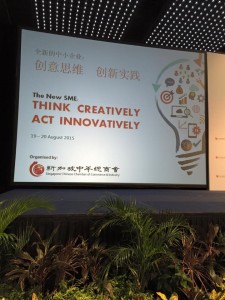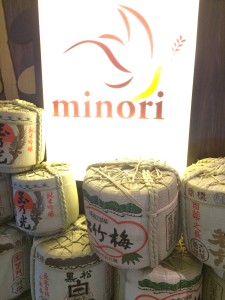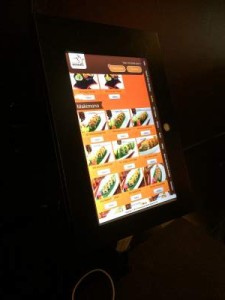Editors Note: This post was written by Kyjean Tomboc. She will be contributing to the PayrollHero blog from time to time.
 Whether you own a small diner or manage a large chain of restaurants, social media presence these days is the norm rather than an exception. This should not be a surprise, given that recent figures by Forbes reveal that a whopping 81 percent of the people they surveyed indicated that social media posts by family and peers influenced their purchase decisions.
Whether you own a small diner or manage a large chain of restaurants, social media presence these days is the norm rather than an exception. This should not be a surprise, given that recent figures by Forbes reveal that a whopping 81 percent of the people they surveyed indicated that social media posts by family and peers influenced their purchase decisions.
Restaurants who opt not to embrace social media marketing will be surprised to find out that they still have a social media presence after all. Diners will inevitably tweet, post photos on Facebook or Instagram, and talk about their experience on Yelp.
To get ahead of the pack, a restaurant’s marketing team should do more than just create a Facebook account and wait for people to like their page. For social media to work on a restaurant’s favor, these two components are crucial – creating a unique brand voice and using this voice to create a dialogue, rather than a monologue, with your customers.
It’s all about engagement and being consistent with it!
Brique’s Modern Kitchen, a newcomer in Cebu’s dining scene, is one restaurant whose social media presence is a perfect example of what it means to be truly social in social media.
Distinct Brand Voice
Brique’s Modern Kitchen is not difficult to miss if you pass by Salinas Drive in Lahug. The same could be said of its social media presence. On its Instagram, the restaurant describes itself as a:
A Cebu based restaurant offering modern cuisine with a rustic touch. Brique is the perfect place to have good food in a relaxing atmosphere.
See what the folks at Brique’s did? In the first sentence, they identified what Brique aims to offer. Next, they highlighted what diners can expect when they visit the restaurant. This is a brilliant example of using social media as a medium to not just talk about what you do but also showcase what your customers can expect from your restaurant.
Exclusive Offers
Brique’s recently celebrated their first year milestone through a free entree of your choice if you share a photo with the #BriqueTurns1 hashtag on Instagram. Offers that are limited to certain social media platforms is one good way to sustain engagement with your followers.
Responsive to Customer Comments
Did we mention that Brique’s replies to each customer comment on their Facebook page? Whether it’s a positive or negative review from a diner, a quick response from the staff sends the message that a restaurant is genuinely concern of its patrons and the quality of the food they serve.
Kick-Ass Multimedia
Aside from high-quality photographs of items in their menu, real diners (not stock photos), and restaurant interiors, Brique’s has a chock-full of kick-ass videos in their Facebook page.
With storytelling as one of the core principles of digital marketing, Brique’s multimedia content are tools that help the brand show its human side and capture its audience’s attention. Stunning visual content elicits emotions and these emotions, in turn, influence purchasing decisions.
Brique’s Modern Kitchen is just one of the restaurants in Cebu who is optimizing social media for their benefit. What other restaurants are using similar social media strategies? Your opinions matter to us and we’d love to hear your thoughts in the comments below!



 1. You are in both, restaurants and retail – can you tell us a bit more about them?
1. You are in both, restaurants and retail – can you tell us a bit more about them? 
 Singapore’s Changi Airport is building its fourth terminal which is scheduled to open in 2017. Terminal 4, now 70% complete, will see 16 million passengers through the year. That’s an estimated total of 82 million passengers once T4 operates in full swing. We are super excited to see what Changi has in store for us, considering Terminals 1-3 have movie theaters, a butterfly garden,
Singapore’s Changi Airport is building its fourth terminal which is scheduled to open in 2017. Terminal 4, now 70% complete, will see 16 million passengers through the year. That’s an estimated total of 82 million passengers once T4 operates in full swing. We are super excited to see what Changi has in store for us, considering Terminals 1-3 have movie theaters, a butterfly garden,  Editors Note: This post was written by Kyjean Tomboc. She will be contributing to the
Editors Note: This post was written by Kyjean Tomboc. She will be contributing to the  Navigating Cebu City’s mother of all wet markets can be tricky and intimidating for the uninitiated. This guide is not going to tell you where to find the freshest and cheapest kilo of mangoes in the market nor reveal how much a kilo of pork tenderloins will typically cost when you buy from there. We will leave the mini-discoveries to you! We will, however, provide tips and hacks that are guaranteed to help you become a
Navigating Cebu City’s mother of all wet markets can be tricky and intimidating for the uninitiated. This guide is not going to tell you where to find the freshest and cheapest kilo of mangoes in the market nor reveal how much a kilo of pork tenderloins will typically cost when you buy from there. We will leave the mini-discoveries to you! We will, however, provide tips and hacks that are guaranteed to help you become a 
 The theme for the conference was “The new SME. Think Creatively. Act Innovatively”. The concept was all about helping Singapore’s small and medium enterprises think outside the box when it comes to their challenges. Singapore’s SME sector has challenges around finding and retaining talent, growing outside the country and using technology to take businesses to the next level.
The theme for the conference was “The new SME. Think Creatively. Act Innovatively”. The concept was all about helping Singapore’s small and medium enterprises think outside the box when it comes to their challenges. Singapore’s SME sector has challenges around finding and retaining talent, growing outside the country and using technology to take businesses to the next level. I was up next with the simple task of telling my story. Myself and my business partner Michael Stephenson has been in business together since 2000 and
I was up next with the simple task of telling my story. Myself and my business partner Michael Stephenson has been in business together since 2000 and  1. Can you tell us more about your background in retail?
1. Can you tell us more about your background in retail?  2. Your clothes are pretty famous, even the President wears them, how did that come about?
2. Your clothes are pretty famous, even the President wears them, how did that come about? 4. How do you decide on a location? (mall, street level, etc)
4. How do you decide on a location? (mall, street level, etc) 6. What was the tipping point for you?
6. What was the tipping point for you? 
 On a busy day, this is especially helpful because no time is wasted on waiters who are busy with other tables. Customers can order as they please and take their time deciding what they want to eat. By using eMenus, the restaurant has reduced labour costs by keeping only food runners to serve food.
On a busy day, this is especially helpful because no time is wasted on waiters who are busy with other tables. Customers can order as they please and take their time deciding what they want to eat. By using eMenus, the restaurant has reduced labour costs by keeping only food runners to serve food. Coastes
Coastes 1. You are the CEO of Bigg’s and ¿Que Pasa? – can you tell me a bit more about each brand?
1. You are the CEO of Bigg’s and ¿Que Pasa? – can you tell me a bit more about each brand? 2. ¿Que Pasa? – sounds exciting, can you tell us a bit more about how the brand came about, what you did to understand your communities needs, etc?
2. ¿Que Pasa? – sounds exciting, can you tell us a bit more about how the brand came about, what you did to understand your communities needs, etc? 5. How do you decide on a location? (mall? street level? stand alone business?)
5. How do you decide on a location? (mall? street level? stand alone business?) Creative destruction
Creative destruction